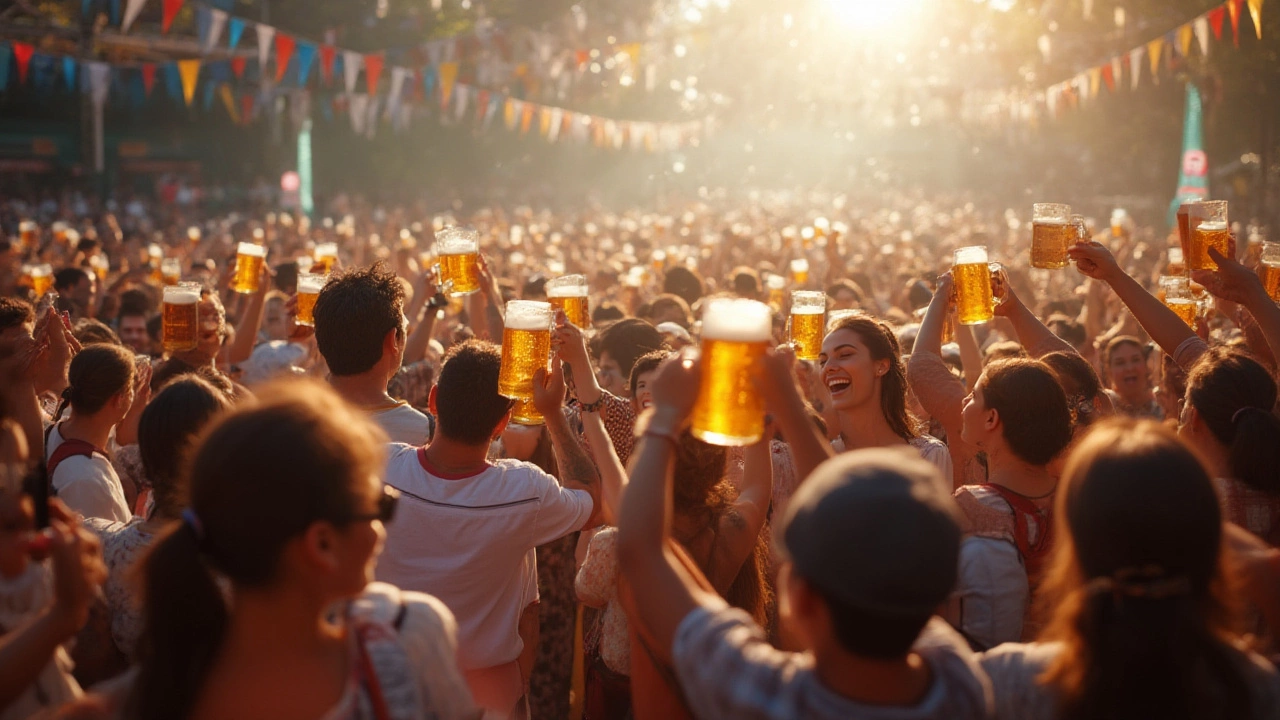
Every September, Munich throws a party so big that it makes most other festivals look like local garden barbecues. Blaring Bavarian music, endless rows of wooden benches, a sea of Dirndls and Lederhosen, and of course, gigantic mugs overflowing with golden brew. But is Oktoberfest really the biggest beer festival on the planet, or does another contender take the crown? It’s a fair question, especially with the millions who trek to Bavaria, barely blinking at the wild tales of beer-soaked revelry. You might be surprised by the numbers—and what happens behind the scenes at this famous festival.
Munich’s Oktoberfest: By the Numbers
Oktoberfest began in Munich in 1810—not as a boozy bash, but as a royal wedding celebration for Crown Prince Ludwig and Princess Therese. What started with horse races and a bit of local beer has snowballed into the epic annual gathering the world knows today. Lasting about 16 to 18 days, it always starts in September (not October, as you may guess) and finishes on the first Sunday in October. The official site—Theresienwiese or "Wiesn" for locals—spans over 100 acres with a skyline dominated by giant tents.
Let’s pull back the curtain on just how massive Oktoberfest is. As of 2024, the festival typically welcomes over 6 million visitors from nearly every corner of the globe. In fact, it often sees more people than live in all of Scotland, elbowing for a prime spot at the beer tables. That’s not just hype. During the two-week party, attendees consume around 7.5 million litres of beer. Trying to visualize that? Imagine the Scottish Parliament building filled thirty times over with beer. No other event comes close to serving up that much alcohol in such a short span of time.
Munich’s Oktoberfest isn’t just about drinking, either. There are nearly 600,000 traditional grilled chickens sold, 150,000 pairs of pork sausages, and more than 100,000 giant pretzels devoured. Serious foodies could spend all day sampling pork knuckles, roast ox, potato pancakes, and apple strudel without ever finishing the menu.
The festival grounds themselves buzz with fairground rides, parades, and quirky traditions—like the ceremonial tapping of the first beer barrel by Munich's mayor or the grand Costume and Riflemen’s Parade. Security is tight, with upwards of 1,000 police officers and countless support staff, all making sure the crowd keeps things mostly civil. No wonder planning starts nearly a year in advance.
It’s hard to overstate Oktoberfest’s impact on Munich’s economy. In a typical year, Oktoberfest generates over €1.2 billion for the region, supporting thousands of jobs across brewing, catering, tourism, and public transport. For many locals, it’s an annual payday and a chance to show off Bavarian hospitality.
| Year | Visitors | Beer Consumed (litres) | Number of Beer Tents |
|---|---|---|---|
| 2015 | 5.9 million | 7.3 million | 14 large, 21 small |
| 2017 | 6.2 million | 7.5 million | 14 large, 20 small |
| 2019 | 6.3 million | 7.3 million | 14 large, 20 small |
| 2022 | 5.7 million | 6.9 million | 14 large, 20 small |
| 2024 | 6.1 million | 7.5 million | 14 large, 21 small |
Something people often miss: Oktoberfest beer isn’t just regular German lager. Each tent serves a special Oktoberfestbier, brewed by one of six historic Munich breweries. It clocks in at about 6% ABV, a bit stronger than what you’ll find in your average pub—maybe one reason for all the spirited dancing on benches you’ll witness by late afternoon.
The environmental impact used to be enormous, but in recent years, the organisers have made big strides, cutting down on single-use plastics and introducing reusable mug deposits. Still, over 100,000 beer glasses "go missing" every year, stashed into backpacks as cheeky souvenirs.
If you plan to go, book a table—and a hotel room—at least six months in advance, especially if you’re aiming for a weekend. Traveling mid-week means smaller crowds and more time enjoying each tent. And don’t show up too late: once the band starts in full swing, getting a seat turns into a game of musical chairs nobody wants to lose.
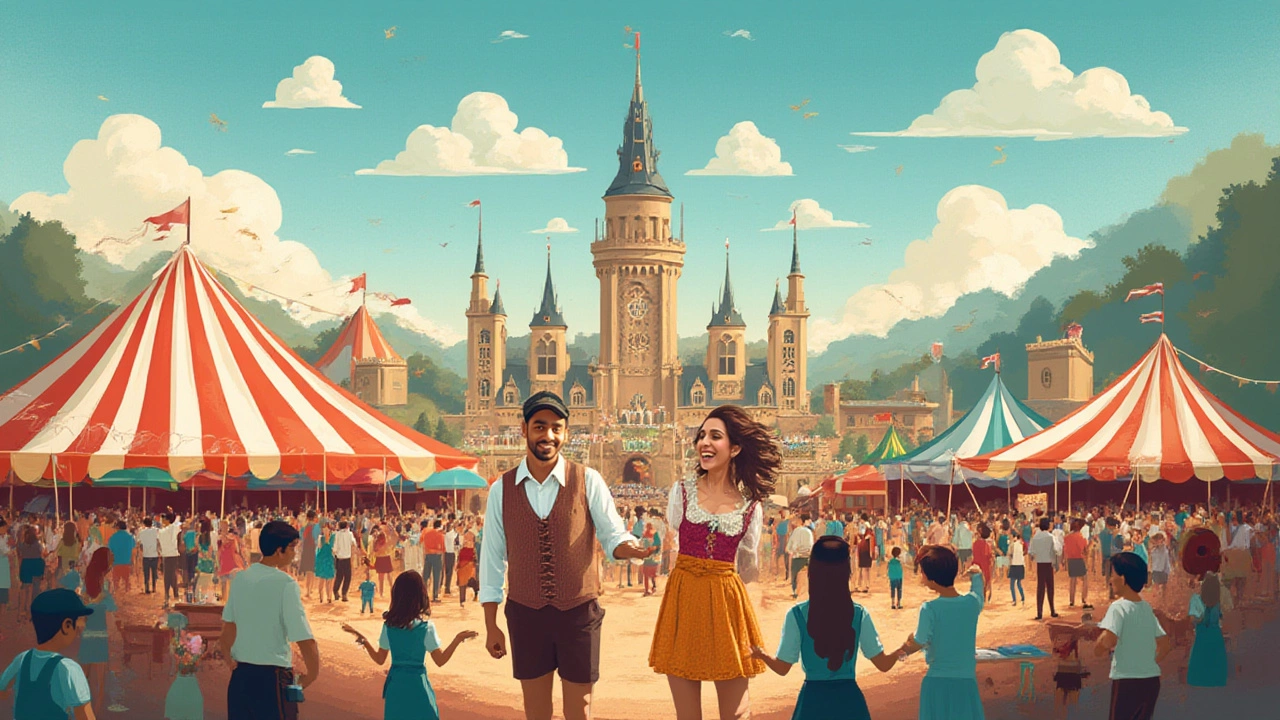
How Oktoberfest Compares to Other Famous Beer Festivals
Believing Oktoberfest is the be-all and end-all of beer festivals feels natural with those numbers. But is it truly the largest in every way? There’s actually some debate depending on what you measure—numbers of visitors, sheer volume of beer, or even square footage used for festivities.
Take China’s Qingdao International Beer Festival. It grabs headlines for being the “Asia Oktoberfest,” taking place on the eastern coast of China where the famous Tsingtao Brewery resides. Launched in 1991, the Qingdao fest stretches up to 24 days in August and claims crowds of close to six million—yes, neck and neck with Munich. The actual beer consumption there is a bit murkier, hovering around four million litres. That’s impressive but still doesn’t dethrone Munich’s record for litres poured—or the global media attention it draws.
Then you've got Brazil’s Oktobeer Fest in Blumenau. What started as a way for German-Brazilian immigrants to reconnect with their roots has grown into South America’s biggest beer celebration. The festival lasts over 18 days and draws roughly 700,000 visitors per year. Blumenau’s unique twist: lots of German folk dancing and even a slightly tropical flair with local food and samba bands mingling with oompah groups. It’s big, but not Oktoberfest big.
The Great British Beer Festival in London is another crowd favourite, attracting up to 50,000 beer lovers over five days. It's known for unique cask ales, traditional pub snacks, and an atmosphere that’s a bit more low-key and old-school than Bavaria. Most British festivals focus on variety (1,000+ kinds of real ale, cider, and perry), rather than sheer volume.
And then there’s Canada’s Kitchener-Waterloo Oktoberfest, which calls itself the biggest Oktoberfest outside Germany. This Ontario tradition welcomes about 700,000 visitors, with plenty of sausages, schnitzel, and polka. But it doesn’t hold a pint glass to Munich when it comes to scale, length, or pure spectacle.
If you look at records for beer brewed specially for a festival, Munich’s Oktoberfest still leads. Guinness keeps tabs on such superlatives, and Munich consistently takes gold for most beer served in the shortest amount of time and continuity—two centuries and still going strong. The event’s vibe is unique too: an open-air, citywide celebration only a place with such deep beer culture could sustain.
Here’s an at-a-glance comparison of the main players:
| Festival | Location | Visitors | Litres of Beer | Duration |
|---|---|---|---|---|
| Oktoberfest Munich | Munich, Germany | 6.1 million (2024) | 7.5 million | 16-18 days |
| Qingdao International Beer Festival | Qingdao, China | circa 6 million | ~4 million | 16-24 days |
| Oktobeer Fest Blumenau | Blumenau, Brazil | c. 700,000 | Unknown | 18 days |
| Kitchener-Waterloo Oktoberfest | Ontario, Canada | c. 700,000 | Unknown | 9 days |
| Great British Beer Festival | London, UK | c. 50,000 | Varied | 5 days |
So, by almost every measure—visitor numbers, scale, litres of beer, economic punch—Oktoberfest in Munich holds its spot at the top of the festival pile. It’s even spawned copycats the world over, from Tokyo to Sydney to Cape Town, but none have matched Munich’s size or star power.
If your idea of "largest" means a sprawling party pulsing with beer, music, and half the world's tourists, Munich is still boss.

Insider Tips and Fun Facts for Experiencing Munich Oktoberfest
First-timers can feel lost in the sprawl and cheer, but showing up prepared will change everything. Research all the tents before you go—each one has a different character, crowd, and beer. The Hofbräu-Festzelt is as lively as it gets, packed with Aussie and American travellers. The Augustiner tent is a favourite among locals—its beer is still tapped from traditional wooden kegs. Want something more family-friendly? Head for the Oide Wiesn (old Oktoberfest) with its vintage rides and chilled-out atmosphere.
Cash is king. Don't even dream about using your debit card to buy a Maß (that’s a litre mug). Bring enough for beer, food, and maybe that irresistible gingerbread heart necklace. Cautious types might tuck a second “decoy” wallet in their coat pocket—just like at any crowded event, pickpockets know what they’re doing.
Get into the spirit. Most Bavarians and seasoned visitors don Dirndls or Lederhosen—it’s not just a gimmick. Rental shops do a brisk business in traditional clothing, so even if you don’t own the real deal, you can show up looking the part. You’ll blend in and get better table service, and those photos will be fantastic.
Pace yourself. Remember, Oktoberfestbier is stronger than typical pints. Alternate each beer with a giant pretzel or a plate of roast chicken. Locals swear by Radler (beer mixed with lemonade) if you want to stretch your evening fun without getting blurry too early.
Plan your transport. Munich’s U-Bahn and S-Bahn trains run late during the festival, making it easy to get home safely. Taxis are everywhere, but surge pricing hits hard after 10pm. A day pass can save you loads of hassle and money, especially if you’re traveling in a group.
Look out for the “Wiesn-Hendl”—rotisserie chicken that’s a must-try, with crispy skin and smoky flavour. By all means, try the Steckerlfisch (grilled fish on a stick), or save your sweet tooth for schmalzkuchen (little doughnuts dusted with sugar).
Children are welcome, especially in the mornings and during “Family Days.” But things get rowdier in the evenings, so parents would be wise to wrap up before dinner.
The lost and found at Oktoberfest is legendary—an average year sees more than 4,000 lost items turned in. Lost wallets, phones, wedding rings, even a set of dentures in a beer mug (true story from 2023). If you lose something, there’s a good chance it’ll find its way to the Wiesn Fundbüro.
Avoid classic mistakes. Don’t stand on the tables—only benches. Don’t toast with an empty glass (bad luck). Never take your beer glass outside the tent—you’ll face a stern talking-to. And keep in mind, tipping your server is expected; a euro or two per round keeps the smiles coming.
For anyone gluten-free or looking to cut back, there’s a growing trend: nearly every tent offers alcohol-free beer, sometimes even local juice blends if you need a break. Munich’s festivals are learning to cater to everyone these days, not just those who want to down a few litres before noon.
If you want to book a table for the festival, check official Oktoberfest websites from February onwards. The popular tents fill up in minutes. Some people try their luck on smaller tents or during afternoons—less pressure, same great atmosphere. Don’t buy tickets from random resellers; you don’t need tickets to enter the festival grounds (only for reserved seating inside tents).
Last cool fact: the Oktoberfest security team even has its own team of "beer testers" who make sure rogue brewers haven't spiked the beverage with anything untoward. It's a tough job, but someone has to do it.
So is Oktoberfest the world’s biggest? All signs point to yes, no matter how you size it up. It’s the one place where tradition, scale, and excess come together like nowhere else—one colossal, happy beer-fueled blur that stays with you long after you leave.
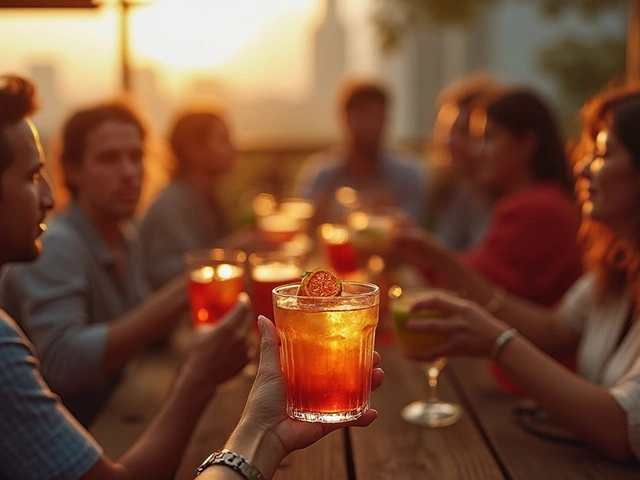
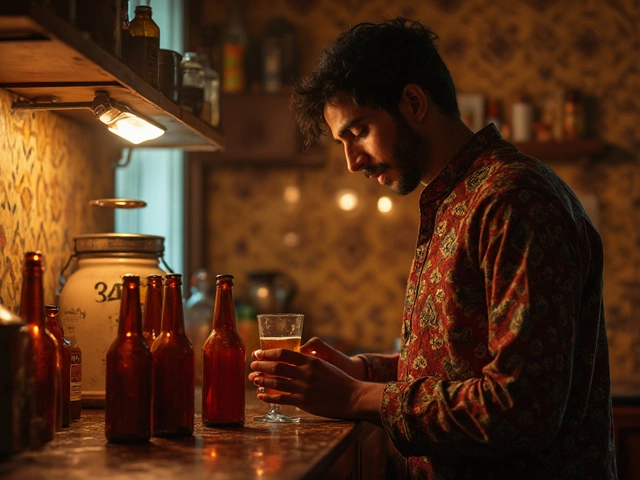
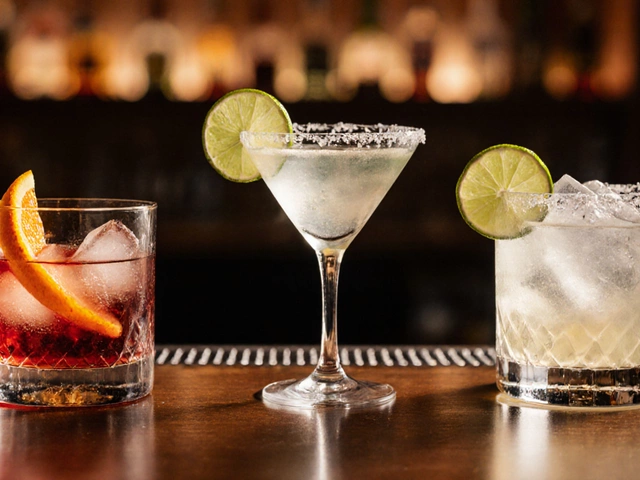


Categories